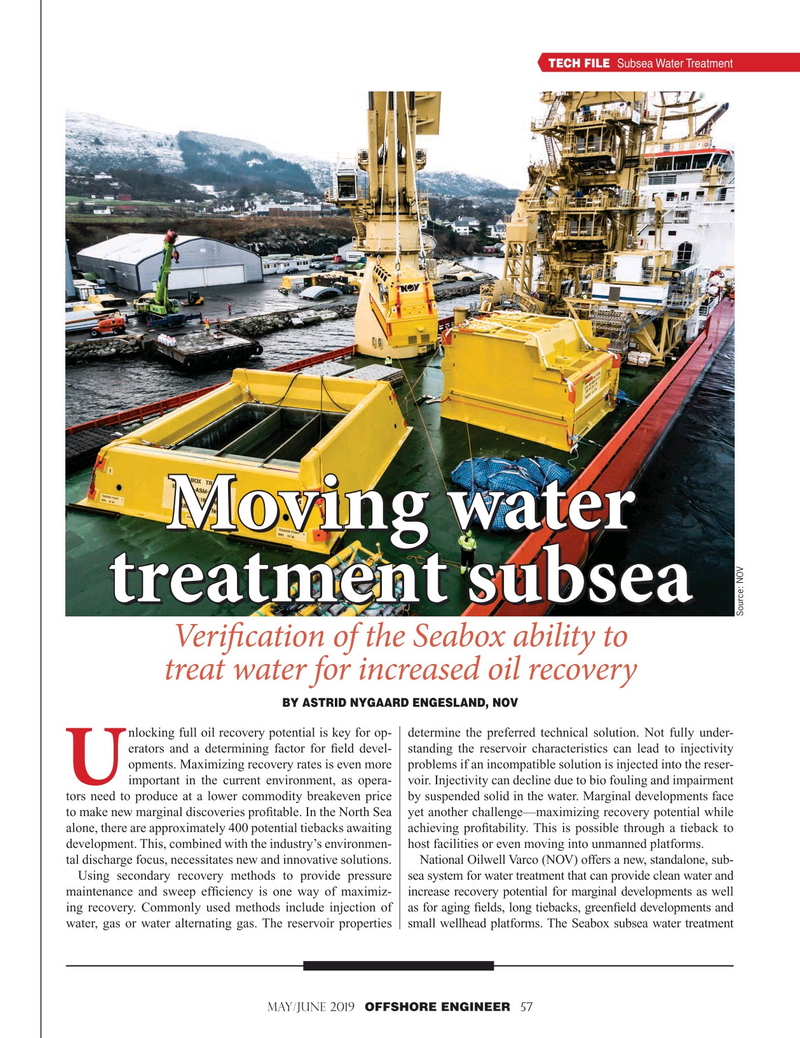
Page 57: of Offshore Engineer Magazine (May/Jun 2019)
Offshore Renewables Review
Read this page in Pdf, Flash or Html5 edition of May/Jun 2019 Offshore Engineer Magazine
TECH FILE Subsea Water Treatment
Moving water Moving water treatment subsea treatment subsea
Source: NOV
Verif cation of the Seabox ability to treat water for increased oil recovery
BY ASTRID NYGAARD ENGESLAND, NOV nlocking full oil recovery potential is key for op- determine the preferred technical solution. Not fully under- erators and a determining factor for ? eld devel- standing the reservoir characteristics can lead to injectivity opments. Maximizing recovery rates is even more problems if an incompatible solution is injected into the reser- important in the current environment, as opera- voir. Injectivity can decline due to bio fouling and impairment
U tors need to produce at a lower commodity breakeven price by suspended solid in the water. Marginal developments face to make new marginal discoveries pro? table. In the North Sea yet another challenge—maximizing recovery potential while alone, there are approximately 400 potential tiebacks awaiting achieving pro? tability. This is possible through a tieback to development. This, combined with the industry’s environmen- host facilities or even moving into unmanned platforms. tal discharge focus, necessitates new and innovative solutions. National Oilwell Varco (NOV) offers a new, standalone, sub-
Using secondary recovery methods to provide pressure sea system for water treatment that can provide clean water and maintenance and sweep ef? ciency is one way of maximiz- increase recovery potential for marginal developments as well ing recovery. Commonly used methods include injection of as for aging ? elds, long tiebacks, green? eld developments and water, gas or water alternating gas. The reservoir properties small wellhead platforms. The Seabox subsea water treatment
MAY/JUNE 2019 OFFSHORE ENGINEER 57 50-64 OE MayJune 2019.indd 57 6/10/2019 10:28:59 AM

 56
56

 58
58